This oral family history was recorded on a reel-to-reel tape recorder in 1969 or 1970 at the home of Wallace and Mary Jane Huskonen, 6644 Hawthorne Dr, Brecksville, Ohio. Speaking was Mary Jane Huskonen (born Dingman, known simply as Mary) with comments by her son, Walfrid. Mary made the recording for her granddaughter Karen who was born on 19 Sep 1968 to Wallace and Mary Jane. The recording was transferred to a CD almost 50 years later on May 27, 2017, by A. Miklos Video, Brecksville, Ohio, and both the original recording and the digital copy are currently in the possession of Wallace Huskonen, 9240 Meadow Lane, Brecksville, Ohio, who transcribed the audio. Note: Most of the following is a literal transcription from the CD with minor edits for smoother reading and understanding and some parenthetical comments in square brackets to clarify facts or correct errors based on recent research.
Mary: I am Karen Huskonen’s grandmother. Her father, Wallace, and I thought it would be nice if we had a history of our family.
I’ll start with Karen’s paternal great-grandfather and great-grandmother. They were born and raised in Finland. Her great-grandfather [Evert Huuskonen] was born in Vesanto and her great-grandmother [Ida Maria Hytönen] in Saarijarvi. I had to have a little help from my son Walfrid on the pronunciation of that name.
Karen’s great-grandfather’s parents owned a large farm and had many tenant farmers living near them. They owned a store and were considered a rather wealthy family at the time they lived there.
Her great-grandfather followed horse racing and was sort of a gambler. And he was also due to be called up to serve in the Russian army. The Russians occupied Finland at this time [Finland was a Grand Duchy of the Russian Empire]. So, his parents decided that they would send him to America, and he came first. Her great-grandmother, her great aunts Mary, Edith, and Wilma and her great uncle Emil were living in Finland at that time and her great aunt Edith went to school there.
After her great-grandfather had been in America about 2 years [his stay here alone was from October 1902 to August 1903], he sent for his wife and four children. They came to this country in 1904 [1903] on a Cunard Line boat [SS Aurania]. They came to Ashtabula, Ohio [Conneaut, Ohio] by train traveling by way of Albany, New York, and Buffalo, New York, to Ashtabula.
Great-grandfather Huskonen traveled originally to Houghton, Michigan, to work in the copper mines, but he didn’t stay there long because he didn’t like working underground. He came back to Ashtabula [Conneaut] and worked [as a laborer] in the train yard and roundhouse where they repaired trains and engines. Karen’s Great Uncle Hugh was born in Conneaut in 1904.
By 1910, the Huskonens [Americanized spelling] were living in Ashtabula, where Karen’s Grandfather Walfrid was born one year later in 1911.
Her great-grandfather was not happy with this kind of work [working as a laborer] and he wanted to go back to farming. The family eventually moved to Kinsman, Ohio, and lived on a very large farm with a very large brick house. During that time, her Great-aunt Edith and her Great-aunt Mary were married from this house.
Edith moved to New York and Mary back to Ashtabula. Eventually, Karen’s great-grandparents moved from Kinsman to Williamsfield across Center Road East from my Grandmother Dingman’s farm. Karen’s great-uncle, Walter, also lived on the Dingman farm. Wilma and Hugh and Walfrid were still at home and attended school in Williamsfield. With the Huskonens living across the road from Grandmother Dingman’s farm, I met Karen’s grandfather Walfrid at a very early age while visiting my grandmother. Whenever I and my brother Ding visited, we would play with Walfrid.
Edith married a gentleman by the name of Frank Nikkari, and they moved to New York. He was a shipbuilder and carpenter and they lived in New York for some number of years.
Walfrid: It’s interesting to note that the name Nikkari translates into carpenter in English.
Mary: After many years, I would say 25, Edith and Frank moved back to Ashtabula to the neighborhood where they lived when they first came to this country.
Mary married Harvey Siekkinen and they went to Ashtabula. He was an engineer on the Pennsylvania Rail Road all his life until he retired a few years ago.
Wilma married a gentleman by the name of Seppelin [first name Waino] and they lived in Warren. I’m not sure what her husband did, but her husband’s nephew was a band instructor for all my children. His name was Urho Seppelin and he was well-known in music circles. [Research shows that Waino worked as a steelworker at Republic Steel Co. in Warren.]
There was also another son, an older son, Emil, and he moved to Chicago and worked in communications. I’m not sure what that work entailed. Emil was married in Chicago, and they had one daughter. Eventually, they moved to Florida, and he has since passed away in Florida. [Actually, Emil worked as a railroad engineer, and he and his wife, Mabel Bleatman, were married in Omaha, Nebraska.]
Karen’s grandfather Walfrid and I were married in 1934. We first lived in Andover and then we went to Cleveland where he did pattern work.
And because his parents needed someone near them, we moved back to Andover, and he worked for a company called Glauber Brass in Kinsman, Ohio as the head patternmaker.
When he was 40 years old, Walfrid quit his work because it had been a pledge to himself that at 40, he would have his own shop. For a few years, we did work in the basement of the house and the garage, and then we had sufficient funds to build a shop.
Karen’s dad, Wallace, was born in 1938, her Aunt Viena was born in 1940, and her Uncle Walfrid was born in 1941.
The shop was started in 1952 with a small section that our two boys helped their father build. And from then on, additions were made. I believe there were four additions made before Walfrid’s death in 1965. We always felt that we did rather well with the shop. We were able to put the children through schools of their choice, Wallace going to Case Institute of Technology [Cleveland, Ohio], Walfrid to Hiram College [Hiram, Ohio], and Viena to Katherine Gibbs School in Boston.
Walfrid: There weren’t any other relatives from Finland, except a brother and a sister of Grandma Huskonen’s, and the only one who anyone really knew was Grandma’s sister, Aunt Matilda Viik. She lived in Ashtabula. Her husband [Bill Viik] worked on the railroad, the New York Central. She wouldn’t go back to Finland it was said because she had had such a rough passage by boat, and she wouldn’t fly. But Bill went back every once in a while.
I remember going over there one time with Dad after Bill had returned from Finland to see things that he had brought back. The thing that I remember the most was a cane that came apart and had a sword in it.
Grandma’s brother also was here, but no one really seems to know anything about him. I remember Dad telling about him stopping by when they were on the farm and he was riding a motorcycle. That’s the only thing I remember. His last name would have been Hytönen.
When I was [going to school] in Finland and Mom and Dad traveled there we visited people who lived where Grandpa had lived and the only relatives that we knew about were very distant cousins. There was one fairly young man named Paavo Huuskonen who was a race car driver, driving his Saab on frozen lakes.
There is a marker in Vesanto that is a memorial to the Huuskonens. And there is a story about the origin of the name that it doesn’t really mean anything, or if there was a meaning it has been lost. The story behind the origin of the same is that in Finnish the word Huusi is the past tense of shout and if you add a “ko” suffix to any verb form or word it’s a question, so if you say “Huusiko” it means “did they shout?” or “did someone should?” And then if you use the term “ne” it’s in the derogatory sense. So, there is this kind of funny story that the name Huuskonen came from “Huusi ko” and it was shortened to Huuskonen. But that is a story that someone probably made up.
Mary: Paavo’s mother and his sister were living in this very huge log house. It had many rooms beautifully kept. Because their winters are so long, they kept large plants in their houses. Their name, by the way, was Huuskonen. And they were so proud of their son, who lived next door. We were there in 1961 and the son’s house was very new. It had steam heat which was a great improvement over the fireplaces.
Walfrid: They are not really fireplaces such as we know them, but they are an older form of central heating in that there is a corner stove that is made by bricking the corner. A fire is made in the stove to heat the bricks and the bricks will hold the heat for a long period of time. The bricks have a tile facing so that they are ornamental as well as useful. This feeds into a central chimney so that more than one room can be heated. There are these stoves in adjoining rooms with the chimney going up in the middle.
Mary: If I may digress a little bit, we were particularly pleased with our welcome at the Huuskonen home. Both front doors were wide open, even though it was cool and there was misty rain. And the mother and her son, and a gentleman by the name of ??? were there. And when Viena and I came up to meet them, it was quite a shock to hear the gentleman say “hello.” It was about the first American or English word since we’d been in Finland, especially when we were visiting relatives. He had been to Ashtabula, expecting to stay there and work, but he had gotten homesick and so had come back to Finland.
Walfrid: He knew Grandpa in this country too). They say he stayed with Grandpa and Grandma awhile.
Mary: Their home inside was lovely. There were many old family heirlooms. We were speaking of the fireplace – the one they had heated four rooms. It was in a central location. And there were two living rooms and two bedrooms that this fireplace heated.
We were served coffee in every home we visited, plus some sweets or some kind, cake, cookies, sometimes fruit, but invariably it was coffee with something else.
I would like Walfrid to tell about the large family room. We would call it a family room in our country.
Walfrid: In the older Finnish homes there is a room called a tupa. And this is generally quite a large room, and in some of the older houses, the logs form the walls. There’s no facing put on them. Generally, there are benches all the way around the outer walls and in one corner there will be a cooking area and there will be a cooking range [or cooking stove], plus an oven that’s used for making baked goods. Now this is generally five feet high, or six feet if it’s a large one, and again it’s built on the same principle as the heating unit, in that there’s a great amount of mass made up of clay and bricks with an opening within this, and the fire is built within this cavity, and the heat penetrates into the bricks and the bricks hold the heat. After the fire has died down, the ashes are then scraped out and cleaned out and then whatever is being made whether it is bread or pastries are put into the oven on wooden paddles. They can make really good food that way.
Mary: These rooms are also used for large gatherings, such as dances or just a community or family get-togethers.
Karen’s Great Grandpa Huskonen, died in 1947 and her Great-grandmother Huskonen died in 1958 in a rest home.
Walfrid: We might also say what their first names were: Grandpa Huskonen’s first name was Evert and Grandma Huskonen’s first name was Ida.
It’s rather noticeable that those aren’t Finnish names. I don’t know what the origin of either of them is, but it wasn’t uncommon for Finns to take German names, both given names and sometimes surnames. The taking of a German given name is noticeable in Dad’s given name, Walfrid, which is said to have German origins.
Mary: Karen’s maternal Great-great-grandparents, Jared Green and Mary Sumner, were born in Conneaut.
They were married in Conneaut, and from that union came Karen’s Great-grandmother Grace, and her Great-uncle Ed Green. While my mother was young, while she was possibly three years old, her father died of an illness, possibly pneumonia, and her mother moved with Grace to live with an uncle. She got married soon after and had a stillborn baby girl. After the baby was born, she was diagnosed with an enlarged heart and she died shortly after.
Grace’s brother, Karen’s Great-great-uncle Ed, went to Michigan at the time of their mother’s death and there were no women there to take care of his sister. He was, I believe, 11 and she was 4 at the time. He had been living in Andover with a family by the name of Morley, working and going to school. When his mother died, and his sister was left with the uncle, he wrote a letter to the Morley’s asking if they would take care of Grace. [Actually, an aunt wrote the letter. Wallace has a copy.]
The Morley’s were older people. James Morley had been a landowner and quite a politician in the Andover area. He was an instigator, along with two brothers, in getting the railroad through the town of Andover, probably because they owned property there.
Walfrid: There’s a joke that goes with that. It was that Mrs. Morley was a diplomat too in that she invited the railroad men to her house to eat so she helped get the railroad there through their stomachs.
Mary: She was an excellent cook. No question about it. She was English [her father was born in England, she was born in Pennsylvania]. She was no relative whatsoever to Ed Green or Karen’s great-grandmother Grace. [NOTE: The Lake Shore & Michigan Southern’s branch was opened through Andover in 1872. James Morley’s ex-wife, Maria Dewey Morley, was enumerated in the 1870 Census as living in Sandusky County as head of household with her daughter Maggie. Jennie was married to James Perkins who passed away in 1880. There are two conclusions here: 1. Jennie Morley probably was not the hostess for the railroad men in about 1870. 2. And Maria Morley was living in the western part of the state. Does this story suggest that the wife of another Morley brother was the hostess instead of a wife of James? — WDH]
In time, Jennie Morley decided that Grace could come to Andover and stay for a short while. And so, the Morley’s sent the money for her to come [to Andover, probably by railroad] and she lived with them until she was married to Karen’s Great-grandfather Wallace.
The Morley’s were very good to Grace. They gave her every opportunity. She had everything that anyone might want.
Mrs. Morley didn’t like to have anyone bother doing housework, so Grace was able to work in the Post Office if she wanted to. She was very active in plays. She had medals for speaking. She was a very popular person in the community.
She married Wallace Dingman, Karen’s great-grandfather in 1904. He was born in Williamsfield on the Dingman homestead.
Walfrid: He had met her in Andover in school, hadn’t he?
Mary: Yes, because Williamsfield had a grade school but no high school at the time. They had only a one-room school, and Andover had a larger school. So, Wallace came to Andover and met Grace and they were married in 1904.
Karen’s Great-great-grandfather Andrew Dingman was born and lived near Jamestown, Mercer County, Pennsylvania, on a farm. Her Great-great-grandmother Mary Elizabeth Betts also was born in Mercer County. After they were married [in 1877], they moved to [what would become known as] the Dingman farm, considered at that time to be a large farm. They had three sons. Nelson was the oldest, and he died about 10 years after he was married to Florence Pratt and they had two daughters, Faye and Ruth.
Walter, Karen’s great-great uncle, married late in life to Mina Mae Waid [1948]. Wallace, as I have said, married her Great-grandmother Grace.
Walfrid: Walter and Wallace were twin brothers.
Mary: Yes. One reason Walter was so close to his mother was that he was a very sickly baby. And when they lived on the farm, Wallace did much of the outdoor work, where Walter wasn’t able to do heavier work because he was so sickly.
In 1908, shortly before I was born, Karen’s Great-great-grandfather Andrew Dingman died and Great-great-uncle Walter stayed with his mother for the remainder of her years, living on the Dingman Farm. He was, by that time, in good health and able to do farming. They lived very well on the farm.
They had one of the first automobiles in the community [Williamsfield]. I can recall that it was a Studebaker. We felt quite elegant riding in it. I can remember riding to Meadville to visit Grandma’s [Betts] relatives, going up the steep hill and we had to get out and put rocks behind the wheels because the motor had gotten so hot that we had to stop. For all the faults, it was still considered an excellent automobile. It was jacked up in the winter to save the tires. The tires were removed and taken to the basement so that nothing would happen to them. It was an open car [touring car] and had what we called side curtains. We felt quite proud when riding in it.
Walfrid: We should tell about Aunt Ann [Betts, married name Smith], just because of the expression we’ve used in the family. Aunt Ann was Grandma Dingman’s sister, and she and her husband and family had homesteaded in Canada.
She must have been a real “corker” for all the stories about her: she liked to play cards and dance and probably raise a little hell once in a while.
Mary: She had many illnesses. Her legs swelled so very much. But I can recall that after my grandmother died, she stayed with my uncle for some time. Her legs would be swollen, and she could hardly maneuver around. She would sit on the porch and see many cars go past and she’d say “Walter, where are they all going? Let’s go. Let’s find out where they are going.” She was always a person interested in everything.
Karen’s Great-grandmother Grace and Great-grandfather Wallace moved to Conneaut and he was an engineer on the New York Central Railroad [In another recollection, Mary stated that Wallace gave up the engineer’s position and became a switchman, probably on the Bessemer and Erie RR, so he wouldn’t be away from home so much.]
Grace and Wallace were married in 1904 and I was born in 1908 in Conneaut. Three years later, my brother Wallace was born in Conneaut, too. We lived there all our lives until my mother remarried.
My father Wallace died in 1920. It was necessary for my mother to earn a living for our family. We did have a bit of savings, but my father had been ill for so long that most of it was gone. My mother had very good friends on the school board [Andover] and they decided, after a conference, that if she would go school at Kent—at that time it was called Kent Normal School—if she would go there for 12 weeks during each summer that they would give her a position. It also helped that she had traveled quite a bit. We’d been to California and other places and they thought that would help her in her teaching. She taught for some time until she remarried.
I graduated from East Conneaut High School in 1927. It’s interesting to note that I attended the same school after high school that my mother Grace did. At that time, I was there, it was called Kent College. It’s now called Kent State University.
My brother, during this time after my father died, was eight years old, and he spent the summers with my Uncle Walter, while my mother was continuing her education because it was necessary for her to go each summer to do this. Sometimes I went with her, and sometimes I stayed with my Grandmother Morley [adoptive] for the summer. It was a difficult situation, but I don’t think it ruined either of our personalities. I think we were quite well adjusted.
My mother went to school for, I believe it was seven years, before she got her certificate to teach.
The year before I was to graduate from high school when I was 16, my mother married John Tripp in Andover, and she and my brother moved there. I was very fortunate because my fondest wish was to graduate with my class in Conneaut. One dark, dreary day, when the sun just peeked through the clouds, my mother said she had news for me. It was the fact that they were going to be able to send me to Conneaut to board and finish my last year of school. And I said there is a ray of hope with the sunshine.
I graduated the next year and then my home was in Andover. I was away at college for two years, and after that, I taught school for seven years in Bedford.
In 1934, Walfrid Huskonen and I were married. We lived in Bedford for a short while, and I said it was necessary for us to go back to Andover to help his parents. They weren’t so feeble but it is the custom the Finnish family to have the youngest one somewhere near so they can be of assistance to the mother and father. And that was the role he played for his mother and father.
My brother Wallace finished school in Andover, and he was married to Betty Lyman of Andover and they have seven children: Sidney, Ned, Jerad, Jill, Betsy, Betty Ann, and Andrew. They now live in Buffalo. Ding at one time was associated with the aircraft industry, with Curtis Wright Aviation Co. in Buffalo. He was a troubleshooter for all their planes. He traveled a great deal when the children were small. He was responsible for the inspection of all new planes when they left the plant. It was during the time of the war [WWII].
When Curtis Wright moved to Columbus [OH], he found it would be difficult to move because of his family—it was difficult to find housing. He stayed in Buffalo and began working for Westinghouse as a foreman. [Westinghouse took over the aircraft plant as a manufacturing facility.]
This is about all the information about Karen Huskonen’s heritage that I can recall right now.
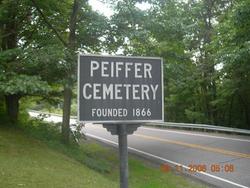
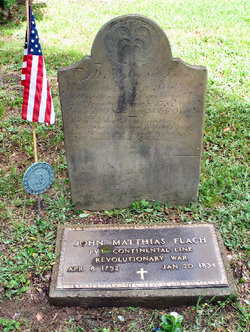

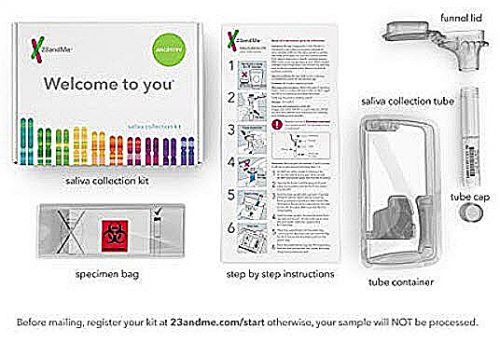
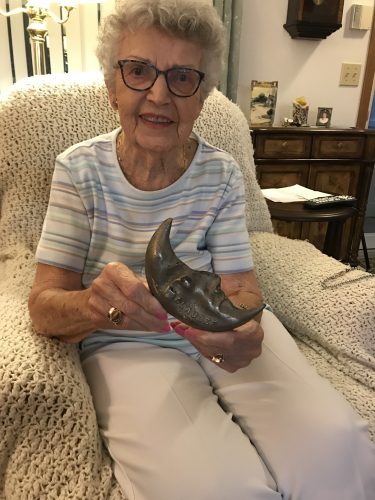
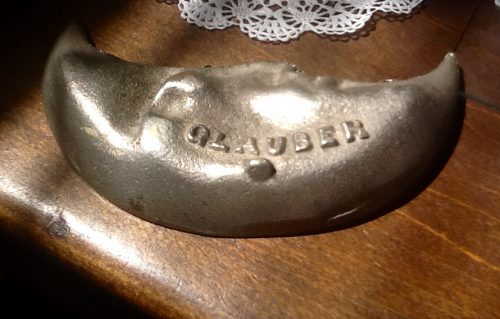
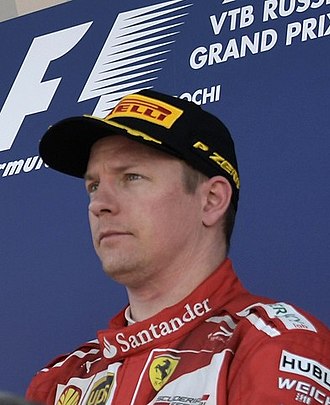
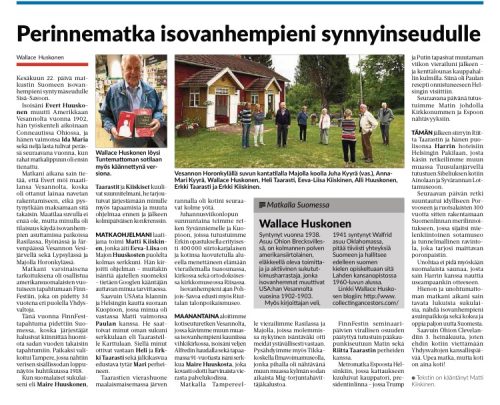

Recent Comments